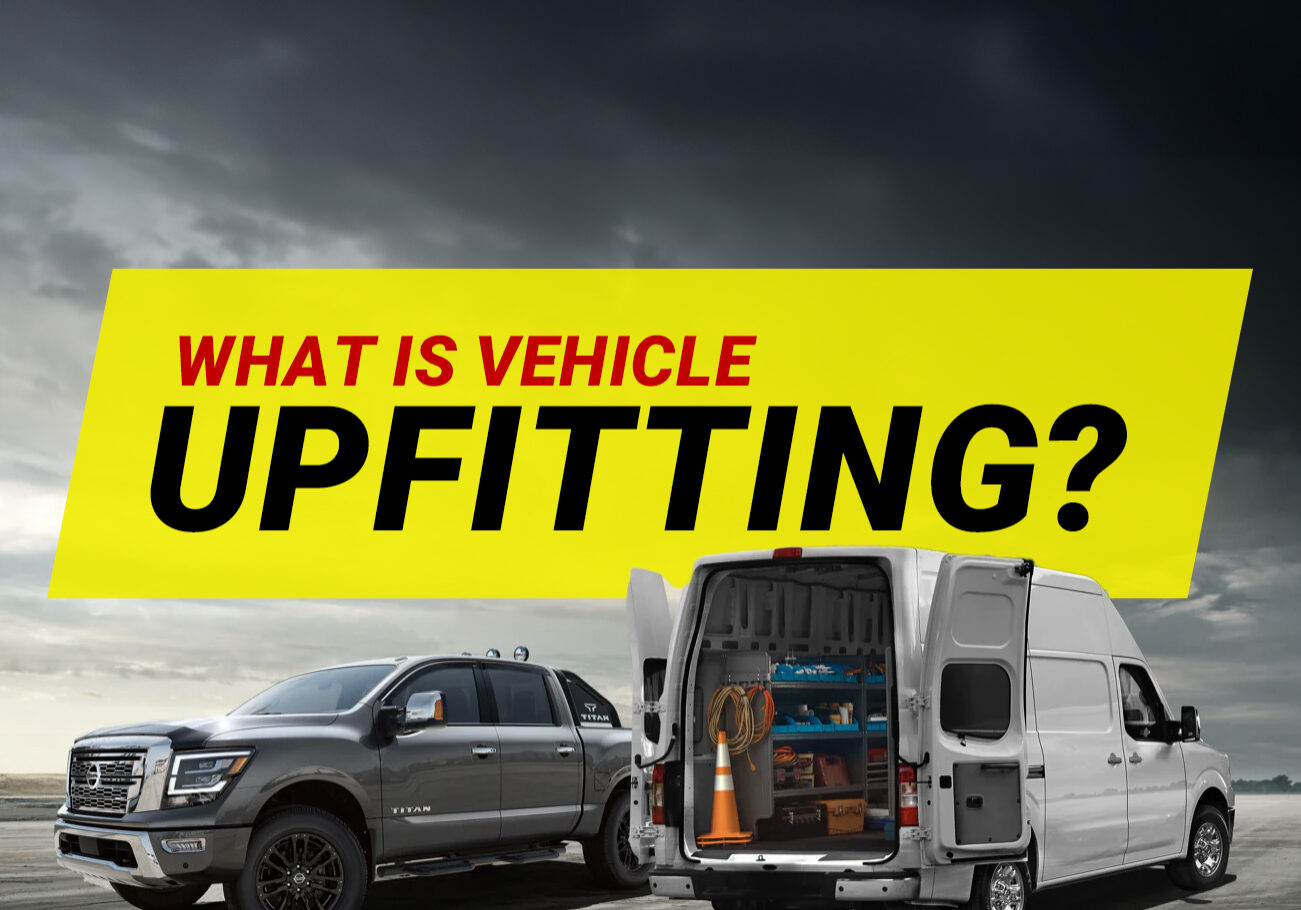What is Vehicle Upfitting?
Short Answer: Upfitting is like giving your car or truck a custom wardrobe—it’s about enhancing, upgrading, and tailoring vehicles to meet specific needs.
Updated: January 8, 2024 // Questions

Upfitting up your fleet vehicles can totally shift the game, morphing your average rides into customized beasts that suit your company’s needs perfectly. But here’s a huge but, mess it up and you’re on track for a cash-bleeding journey. In this walkthrough, we’ll navigate through the nitty-gritty of Upfitting – why to do it, what it is and how to get it done right without just wasting gas or blowing money away.
Think of it as going beyond adding a hardcore toolbox; it’s about making your trucks lean, mean, and fuel-efficient machines. It’s the superhero transformation for your vehicles, boosting not just efficiency but also safety and long-term savings.
5 Benefits of Upfitting
1. Lower Total Cost of Ownership (TCO)
Upfitting can shed pounds off your vehicle, making it a fuel sipper. Lighter load, less fuel, more savings.
2. Increased Productivity
Choose the right upfit, and watch your drivers become road warriors. More shelving, ergonomic upgrades—it’s the recipe for productivity.
3. Higher Driver Retention
Keep your drivers happy, safe, and comfortable. Upfitting shows you care, making them stick around longer.
4. Add Value to Vehicle (More ROI)
Upfitting isn’t just a cost; it’s an investment that pays dividends. Lower costs, fewer accidents—hello, increased ROI!
5. Lower the Cost of Your Vehicles Over the Long Term
Plan for the future. Upfitting isn’t just about now; it’s about maintaining or increasing vehicle value for the long haul.
Examples of Upfitting
Ever wondered how upfitting looks in action? It’s not just shelves and racks; it’s a symphony of improvements tailored to your business:
- Shelves
- Racks and hooks
- Storage cabinets
- Lights
- Winches
- Cranes
- Cab protection
It’s the bespoke suit for your fleet, each upgrade curated to maximize efficiency and value.
Related: Who Are Black Widow Trucks?
Tips for Upfitting
1. Do Your Research
Before you dive into the upfitting universe, know what your fleet needs. Research upfits, find local pros, and arm yourself with knowledge.
2. Develop a Plan
Don’t just wing it. Plan your upfitting journey with milestones and deadlines. A roadmap ensures a smooth ride.
3. Know Your Budget
It’s not just about the lowest price. Do the math, calculate TCO, and let your budget be the guiding star.
Executive Summary
Upfitting isn’t a luxury; it’s a necessity in the ever-evolving world of fleet management. Lower costs, happier drivers, and increased ROI await those who navigate the upfitting highway wisely.
Maximize Efficiency, Minimize Costs: Upfitting Done Right!
When to Take the Plunge?
You might be thinking, “Is now the right time to upfit my fleet?” Well, with global events squeezing supply chains, it’s a race against scarcity. Upfit now before parts become rare gems!
Driver First, Always!
When you’re eyeing upgrades, think safety first. More steps, better handles, and drop-down racks aren’t just for show—they keep your drivers comfortable and, more importantly, safe. Remember, a happy driver is a safe driver!
Upfitting FAQs
1: Is upfitting worth the cost?
Absolutely! Upfitting is an investment, not an expense. Lower TCO, increased productivity, and happier drivers—they all add up to a significant ROI.
2: Can I upfit any vehicle?
Yes, but smart upfitting is about the right upgrades. Don’t overdo it; stick to what your fleet needs for optimal efficiency.
3: How do I choose the best upfitting company?
Research, referrals, and reviews. Know their track record, and choose a local pro who understands your fleet’s unique needs.
4: Should I upfit now or wait?
Don’t wait. Supply chains are tightening, and waiting might mean missing out on vital parts. Upfit now, secure the future.
For fleet management, upfitting isn’t a luxury; it’s a strategic move. Done right, it’s a journey to cost savings, driver happiness, and increased vehicle value.
Disclaimer: The writers of this article may have used artificial intelligence to help them with some of the material. It should not be a replacement for professional help.







